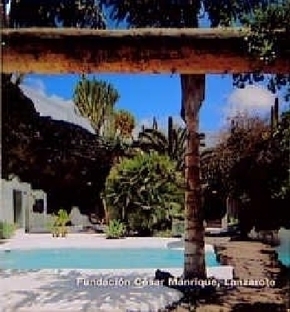Fundacion Cesar Manrique, Lanzarote - Dtsch.-Engl.-Span.
| Verlag | Edition Axel Menges |
| Auflage | 2017 |
| Seiten | 60 |
| Format | 30 cm |
| Gewicht | 828 g |
| Reihe | Opus 16 |
| Übersetzer | Renate Hehr, Michael Robinson |
| ISBN-10 | 3930698161 |
| ISBN-13 | 9783930698165 |
| Bestell-Nr | 93069816A |
Leseprobe:
"Etwas ganz besonderes ist Manriques eigenes Haus. Es erinnert mich an ähnliche Häuser in Pedregal in Mexiko und ist doch einmalig, ist ganz Lanzarote, ist ganz Manrique, ist alt und dennoch neu: Höhlen, Gänge, Wasser, Treppen, Licht von der Seite, von oben, von unten. Es ist das Haus des Königs, der Kunst von Lanzarote. Es ist in Teilen verspielt, ist Experiment. Hier konnten Manriques Steckenpferde galoppieren. Manrique hat den Mut, an die Grenzen des Gestaltbaren heranzugehen."
The island of Lanzarote has become one of the favourite tourismdestinations in the Canary Islands over the last few decades. However,our interest is more one of artistic than of touristic discovery,and this would be virtually unthinkable without the work of an artistwho fell in love with this wonderful paradise. We refer to CésarManrique (1919-1992), who was able to see and reveal to us theunique beauties arising out of the happy marriage of the four elementsbelieved by the Greeks to form the whole of creation: air,earth, fire and water.In fact, after returning to his island in 1968 after a period spentin New York, Manrique dedicated himself passionately to realizinghis utopia, to renew Lanzarote out of his own sources. AmongManriques best known works on Lanzarote are the Casa Museodel Campesino, the Jameos del Agua, the Mirador del Río, theCactus Garden and his own house in the Taro de Tahíche.Manrique's house in Taro de Tahíche, which nowadays housesthe César Manrique Foundation , can be considered as a »work inprogress« as it was built over a period of almost 25 years and wasstill not completed upon the artist's death. Arising out of the five interconnectedvolcanic bubbles of the underground storey, it hasbecome a metaphor for the amorous meeting of man with MotherEarth, this latter being understood, to use Bruno Taut's expression,as »a fine home for living«. The spaces on the upper floor can bevirtually mistaken for the white cubic buildings dispersed throughoutthe island. But when we cross their thresholds, we have theunique feeling that here something was created which is really new.In fact, Manrique - enemy in equal measure of the »pastiche« ofregionalism and the off-key International Style blind to differentiation- sifted the vernacular with certain modern filters such asFrank Lloyd Wright, Mies van der Rohe or Le Corbusier, and atthe same time gave it such a specific stamp that the final resultbecame indigenous and unmistakeable.Simón Marchán Fiz i s professor of aesthetics in Madrid. LikeMarchán Fiz Pedro Martinez de Albornoz lives in Madrid. The photographsshown in this book are the best photographic interpretationof one of Manrique's work up to now.

